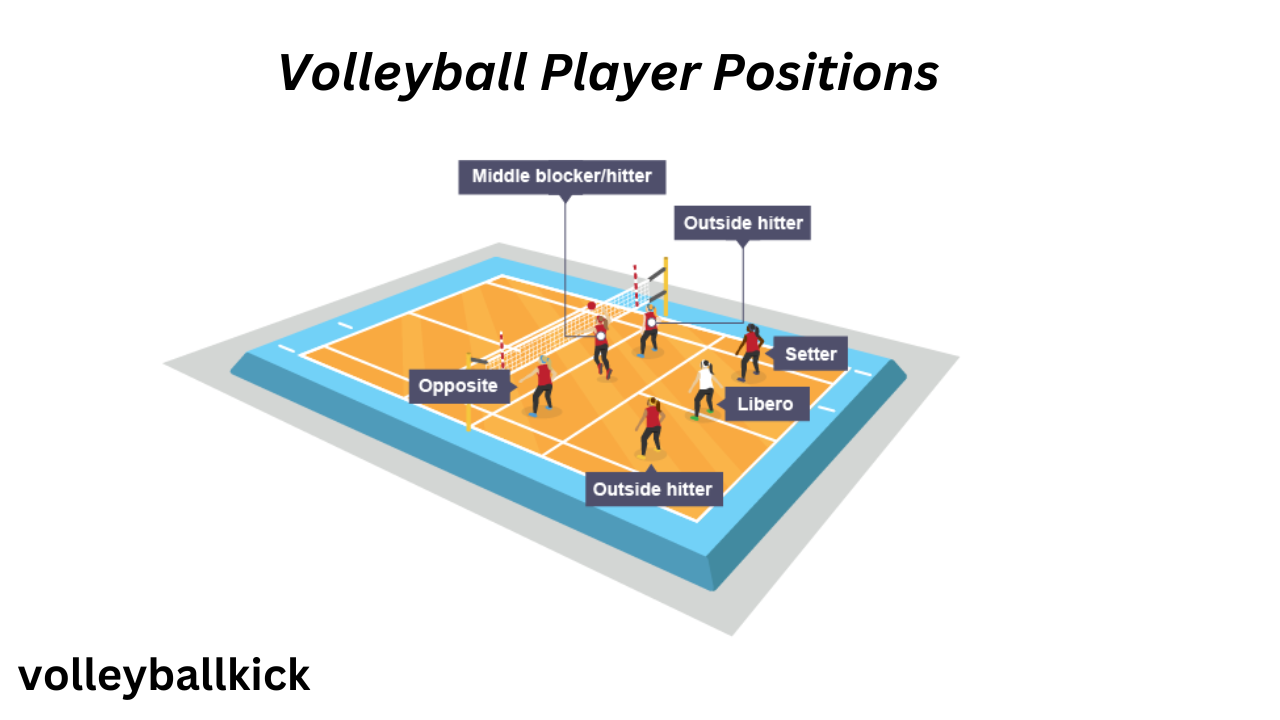In the fast-paced game of volleyball , every position on the court plays a unique role . Whether you’re part of recreational or competitive teams , your team’s success can depend on how well each player understands and performs their job . Each position requires a specific skill-set and athletic ability to excel in every aspect of the game . If you want to play at your best, mastering your role is key to helping your team shine.
At the Hoover Met Complex , where top teams often compete, we’ve seen how crucial it is to break down and understand the six volleyball positions . These positions setter, libero, outside hitter, middle blocker, opposite hitter, and defensive specialist determine the flow and strategy of the game . Each job, when done well, can completely change how a team performs. In today’s blog, we’ll explore how these roles combine to create a winning formula
Setter
In volleyball , the setter is the backbone of the team’s offense , responsible for creating opportunities to score. They use a delicate touch to set the ball perfectly for hitters and attacking players , ensuring the offense flows smoothly. The setter must be a leader with strong communication skills to keep the players on the same page . They also need to think quickly , as their decisions often determine the success of a play . A volleyball setter positions themselves in location 1 to defend and location 2 to attack, making the second touch on the ball to set up a kill.
Setters excel at reading the opponents’ weaknesses and adjusting the team’s offense accordingly. They often use hand signals to guide teammates during the game. Along with their main job of setting, they also block , serve , and pass when needed. Their abilities to handle technical ball movement , execute hard spikes , and find the best position for their hitters make them essential to the court. Whether infront row or back-row , a great setter keeps the team running, ensuring every point counts.
Outside Hitter
Being a Setter in volleyball is not just about skill—it’s about strategy, leadership, and quick thinking. The Setter is often considered the team’s “quarterback,” as they have to position themselves perfectly to control the game. Their main job is to set the ball for their teammates to attack, ensuring every hit is well-planned and powerful. With the ability to read the opponent’s defense, a Setter makes split-second decisions to place the ball in the right location, giving their team an edge. They often work closely with Outside Hitters, Middle Blockers, and Opposite Hitters, creating a seamless connection between the front and back rows.
In my experience, playing as a Setter is as much about communication as it is about technical ability. You must stay aware of your team’s rotation, understand the strengths and weaknesses of your hitters, and make adjustments on the fly. The Setter isn’t just a playmaker—they’re the glue holding the team together. Exceptional setters are quick on their feet, have excellent ball control, and can anticipate the flow of the game. Whether it’s a jump set, a quick toss, or a long ball to the outside, every move counts.
Opposite Hitter
The Outside Hitter plays one of the most versatile roles in volleyball, but the Opposite Hitter is just as crucial, offering a perfect balance between offense and defense. Positioned on the right side of the court, often at location 2, the Opposite Hitter takes on a specialized position that requires strong blocking skills and strategic attacks. They are often tasked with countering the opposing outside hitters, making their defensive responsibility just as important as their offensive contributions. Whether they are back setting or launching an attack from the front row, their jumping ability and ability to read the opposing team’s strategies give them a unique edge.
From my experience, Opposite Hitters often face greater challenges due to fewer lefties on the team, as this position is optimal for left-handed players. However, many right-handed players also excel here, using their power and precision to dominate on the right-side pin. They handle 60% of the team’s attacks from the side, while also stepping into serve receive rotations or assisting with back-row plays when needed. This role isn’t just about the spotlight; it’s about being a consistent force on the other side of the net, always ready to take on the difficulty of balancing power and precision while ensuring the team stays ahead.
Right-side hitter
The Opposite Hitter, sometimes referred to as the Right-Side Hitter, plays a key role in both defense and attacks. Positioned on the right side of the court, their job is to use their strong blocking skills to counter the opponent’s attacks and guard the net against powerful spikes. This position requires tall and agile players who are willing to jump and make quick decisions to block or mount an attack. They often move along the net, using their hands to block the opponent’s hitters and create scoring chances for their team. In my experience, a good Right-Side Hitter excels at reading the opposing team’s strategy and capitalizing on medium or imperfect situations to turn the game around.
Unlike defense-only positions, the Right-Side Hitter contributes to both offense and defense, often stepping into the front-row as a powerful attacker or rotating to the back-row when needed. They are frequently the main option for quick plays and can work closely with the setter to execute a perfect set. Their ability to handle the pressure in tight situations and spike effectively from the right side makes them one of the most versatile players on the team. Whether they are replacing the libero, assisting the middle blocker, or helping the middle hitter, their role is crucial. A great Right-Side Hitter not only defends but also turns defensive attempts into offensive points, helping the team dominate both sides of the game.
Libero
The libero is a key player in volleyball who wears a different color jersey to stand out from the rest of the team. Their main job is to assist with defense and receiving. Positioned in the back row, the libero helps keep the ball in play by making quick contact with it during intense matches. They are essentially specialized in passing and are allowed to replace any player in the backcourt, but they cannot perform an attack near the net. In most leagues, they also cannot serve or set the ball in the front zone.
What makes the libero unique is their ability to rotate freely within the back row without following the regular rules of substitution. This specialized role helps teams focus on strong defense and smooth transitions to attack. Officials often rely on the libero to track defensive plays, as they are a designated player for receiving and stabilizing the game. A good libero knows how to step into play at the right time, ensuring the team stays connected and ready for the next set.
Defensive Specialist
A defensive specialist plays a key position in volleyball , focusing on the back-row to strengthen the team’s defense . Their job is to receive serves , handle tough passing situations , and keep the ball in play during high-pressure moments . While they are not the main server , they are often subbed in to help with digging and passing , which are crucial for maintaining control of the game. Coaches rely on their abilities to make the team stronger, especially when facing tough servers or tricky situations . Wearing a numbered jersey like 12 , they often rotate into the lineup as a substitute for front-row players who are less skilled in defense.
What makes a defensive specialist stand out is their sharp focus and ability to read the other team’s moves. Traditionally , they are not part of every play, but their contributions can turn the tide of a match . By being an excellent passer and knowing where to place the ball , they help set up the team’s offense for the next point . Their role is especially critical during moments when the team needs to regain momentum or stabilize under pressure. In my experience, watching these players work during subs or critical plays shows how much their position excels in creating opportunities and ensuring the team stays competitive.
Serving Specialist
In volleyball , a serving specialist is a player who is exceptionally skilled at delivering a strong, accurate serve to help their team gain an advantage. This position is often filled by someone who specializes in serving during practices , games , and even tournaments , as their focus is to score points or force the opposing side to make errors. Coaches rely on their skills during high-level matches, making the strategic decision to have them subbed in when the team needs a reliable server . These players often help their teammates by keeping the momentum going, especially during sides out or critical moments in the game.
During my time at venues like the Hoover Met Complex or open gyms, I’ve seen how serving specialists truly shine. They are often subbed out after completing their serve, but their impact on the team is undeniable. With only six players on the court at a time, their abilities can determine whether a team wins or loses a crucial point. Such players continuously improve through focused practices and drills, ensuring they are ready for any challenge at any level . A great serving specialist not only scores but also sets the tone for the rest of the game.

With your 6 years of experience as an article writer and shoes review expert, you’re well-positioned to provide insightful and detailed reviews.
